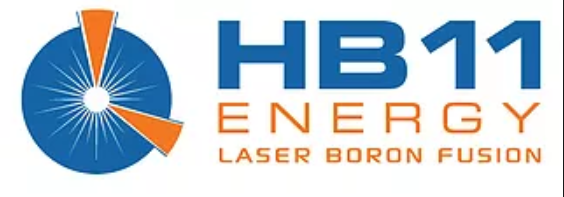I write mainly about nuclear fission reactors in this blog because they exist and generate about eleven percent of the electricity in the world. Commercial nuclear fusion power reactors do not exist yet. Billions of dollars have been spent over the past sixty years in fusion research, but scientists have not yet been able to kindle a sustained fusion reaction that returns more energy than needed to start the reactor. Currently there are at least half a dozen startups in the U.S. alone working on novel approaches to nuclear fusion as well as major government sponsored projects.
Now two recent breakthroughs in fusion research may be the key to commercial fusion power according to a startup named HB11 Energy. Their approach utilizes a reaction between hydrogen and the boron 11 isotope. The fuel for the reaction is an uncompressed solid-state fuel pellet of boron inside a high trapping magnetic field of ionized hydrogen. Fusion of hydrogen and the boron 11 isotope requires about a hundred thousand times the energy input of fusing deuterium and hydrogen which are used as fuels in many current fusion experiments. If extreme non-equilibrium plasma conditions are utilized in conjunction with picosecond laser pulses of greater than ten petawatts of power, the difficulty of fusing hydrogen and boron drops to the general level of difficult of conventional deuterium-hydrogen fusion.
In the hydrogen-boron approach, the transfer of energy into the plasma from the laser does not heat the plasma as much as it accelerates the plasma. When the laser hits the fuel pellet, it is vaporized, and a shockwave is generated which drives the plasma into a high concentration permitting the cascading chain reaction which produces the high energy output.
A one kilojoule laser amplifies a magnetic field up to ten thousand Teslas. A second laser triggers a nuclear fusion chain reaction. Experiments have been carried out that show a fusion reaction increase of a billion times current fusion energy production.
Computer models indicate that a fusion reaction produced by a laser pulse of less than one picosecond in duration at a power of one petawatt could create a sustained fusion reaction. The reaction of twelve milligrams of boron fuel should produce about two hundred and seventy-seven kilowatts or more of fusion energy. This represents about five hundred times the amount of power used to trigger the reaction. A reactor based on the process tested in the laboratory should be able to use one beam ignition at a rate of about one shot per second to reliably produce electricity.
It should be possible to utilize the experimentally tested hydrogen-boron fusion process to construct a simple spherical compact fusion reactor for commercial production of electricity. Calculations suggest that such a proposed reactor based on these principles could possibly produce electricity at a quarter of the cost of electricity generated by coal power plants. The process produces no carbon emission or radioactive wastes.
Currently, there are no lasers which can produce the power and duration needed for a commercial fusion power reactor based on the new process being studied. However, it is estimated that such lasers should be available commercially within a few years. If these scientists are right, a clean cheap source of inexhaustible energy may be only a few years away.
